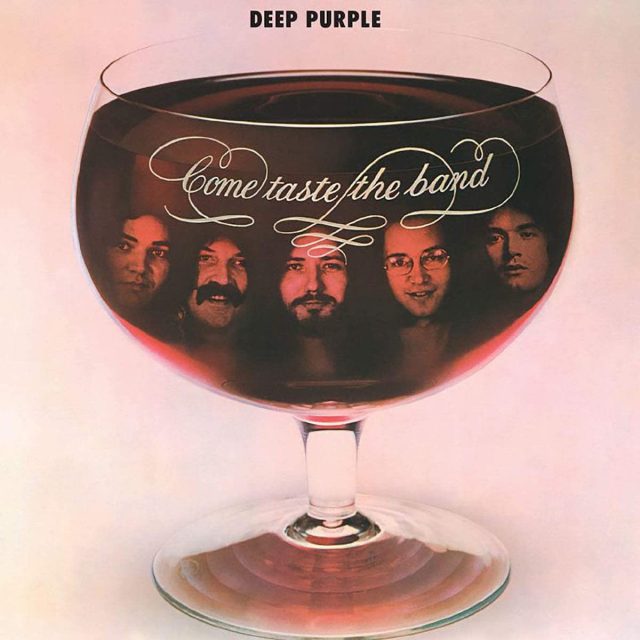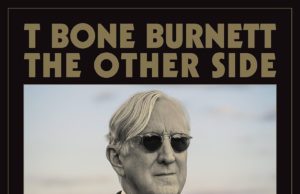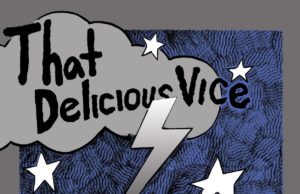 You would actually be well-advised to not put any part of this band in your mouth. Come Taste The Band (1975) and its subsequent tour boasts Deep Purple at their addicted, ill, exhausted and afflicted worst. Yet somehow, this is a pretty great album — though there is debate among Purpologists as to whether or not it should be considered a “real” Deep Purple album. I say, “of course it is.” I’d argue CTTB is a more Purple-sounding album than its rather shitty predecessor, Stormbringer. It was, effectively, the last Deep Purple album until the Mark II version of the band reformed in 1984.
You would actually be well-advised to not put any part of this band in your mouth. Come Taste The Band (1975) and its subsequent tour boasts Deep Purple at their addicted, ill, exhausted and afflicted worst. Yet somehow, this is a pretty great album — though there is debate among Purpologists as to whether or not it should be considered a “real” Deep Purple album. I say, “of course it is.” I’d argue CTTB is a more Purple-sounding album than its rather shitty predecessor, Stormbringer. It was, effectively, the last Deep Purple album until the Mark II version of the band reformed in 1984.
Up until now, this was the only Deep Purple album of the ’60s or ’70s I hadn’t heard. Somehow I always just assumed it was awful because of its silly cover and Spinal Tap-like title. But, when you think about it, Purple had a whole bunch of silly album covers where their heads were worked into the artwork — Fireball (1971) has their five disembodied heads sailing upward in a sperm-like comet. Burn (1974) depicts the band’s heads as burning candles. In Rock (1970) has the band as Mount Rushmore, or maybe Mount Blackmore. To a lesser degree, Who Do We Think We Are (1973) has their heads floating in individual bubbles above open water. To me, the biggest problem with Come Taste The Band — featuring their heads submerged in a glass of red wine — is that the glass is a brandy snifter. So gauche, guys. Come on.
Before we begin, I’ll invite you to watch this incredible documentary about this mad period of the band, named after one of the best tracks on CTTB, Glenn Hughes’ Getting Tighter.
Keyboard player Jon Lord mentions right off the top that the band should have done more to prevent the breakup of the famed Mark II lineup (himself, singer Ian Gillan, drummer Ian Paice, guitarist Ritchie Blackmore and bassist Roger Glover) following Who Do We Think We Are. They didn’t — but still managed to follow up with the fantastic Mark III debut Burn, featuring then-unknown David Coverdale and former Trapeze frontman Glenn Hughes in place of Gillan and Glover respectively. Lord admits both men were excellent vocalists but were never the right fit for Deep Purple in his opinion. “It changed things,” he said.
This is the lineup which earned the moniker of world’s “loudest band” and headlined the legendary California Jam in 1974, when Blackmore went a bit crazy — attacking a cameraman and nearly getting blown up by a pyrotechnic malfunction.
https://www.youtube.com/watch?v=URnQzst6Y1U
As I mentioned, I’m not a fan of Mark III’s second offering Stormbringer. Neither was Blackmore, who quit to co-found Rainbow with Ronnie James Dio and his band Elf.
Rather than pack it in, the band decided to audition a replacement. They ended up going with hired-gun session man Tommy Bolin, who had just finished a two-album stint as Joe Walsh’s replacement in The James Gang, provided solos for the Canadian band Roxy, and helped make one of Jon Lord’s favourite fusion records — Billy Cobham’s Spectrum. When he was hired on the spot by Purple following a jam, Bolin was in the process of making his debut solo album, which wouldn’t get finished until after the CTTB tour.
So we have the birth of Deep Purple Mark IV. Let’s dive into their only album, apart from the baffling live offering Last Concert In Japan, which captured a December 1975 show in Tokyo where Bolin could hardly play because he passed out and lay on his arm for eight hours. Why this rather embarrassing show got released is a mystery. Well, embarrassing for Bolin, but maybe not for Lord, who covered many of his parts for him a la Viv Savage.
Come Taste The Band starts with the banger Comin’ Home — one of seven songs on the nine-song record co-written by newcomer Bolin. It’s so great, apart from the dated, dual vibrato vocal chorus. I hate vibrato vocals — especially in ’70s hard rock or Snow White.
Coverdale has a great rock ’n’ roll voice, but it sounds strained here. The opening is a huge “obviously Deep Purple” one — feedback, cymbals and thick distorted Hammond organ. But as soon as the song kicks in, it turns into a boogie with piano and tambourine. The organ is too low in the mix and I’m not in love with the southern-boy slide guitar. The extended guitar soloing is more self-indulgent and flashy than it is expressive.
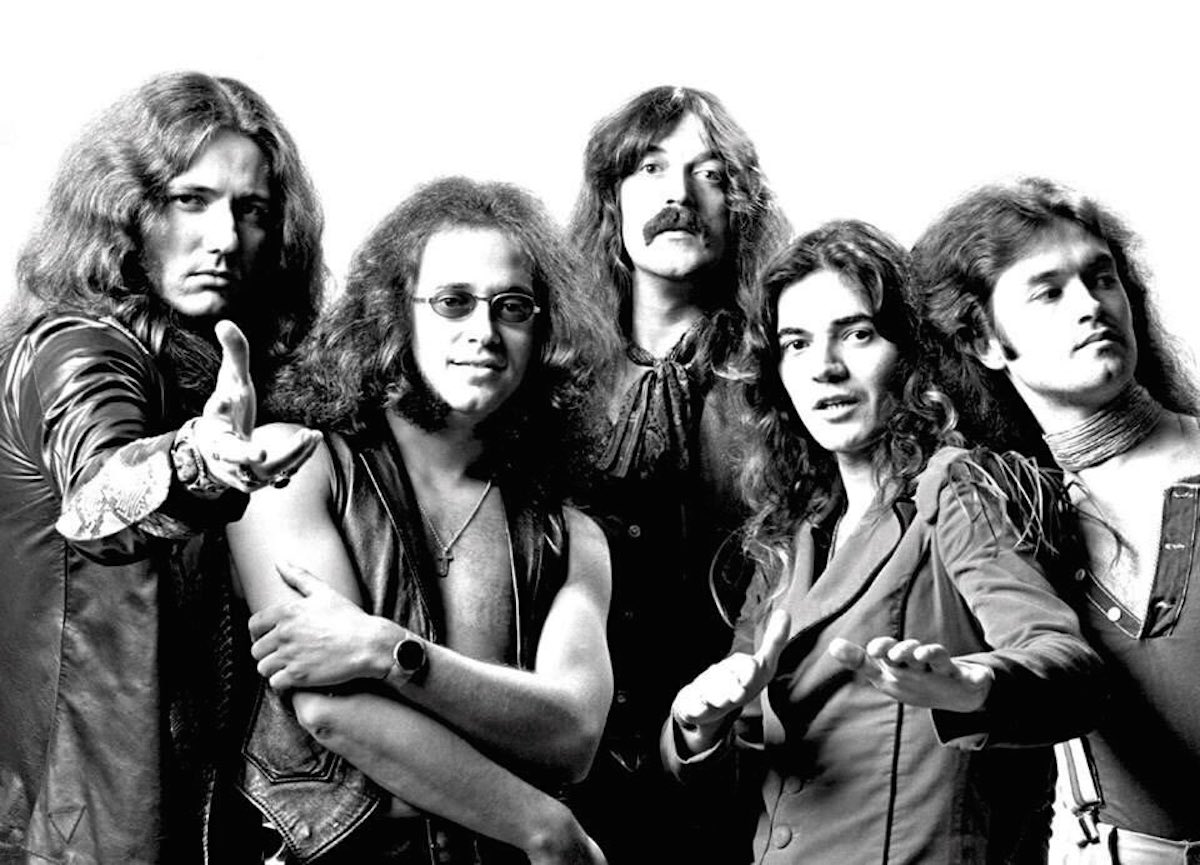
Next up is the facepalm-titled Lady Luck. One rule from me: No to songs with the word “lady” in the title. This one is a co-write between Coverdale and the multi-instrumentalist co-founder of Alabama, Jeff Cook. Looking over Alabama’s discography, I see both Lady Down On Love and Why Lady Why. Lady Luck is a solid song, but the lyrics are stupid.
Next is the best song on the record, Hughes’ Gettin’ Tighter, another Bolin co-write. He actually shares lead vocals on the next song — Dealer — which was a co-write with Coverdale. Gettin’ Tighter was released as a single in the States. Not only does it have a great riff, but it has a super-’70s, Studio 54 funk/groove middle section. Blackmore would not have cared for this at all.
Dealer has more of that slide, but it’s great here — a real greasy rocker that seems like it would be SO much fun to play. Maybe not so much for Hughes, who was in the throes of a serious addiction. In that documentary above, at one point Hughes says it’s easy to tell the footage of him high — it’s whenever he has no shirt on. He wasn’t the only offender — apart from Paice, who never did anything stronger than booze. Bolin died on Dec. 3, 1976 of a multi-drug overdose a little more than eight months after the CTTB tour ended in Liverpool. Heroin, cocaine, morphine and booze were in his system. He had just opened for Jeff Beck that night. A backstage photo of the pair appeared in Rolling Stone.
Bolin and Hughes’ problems plagued the 1976 tour and led to negative reviews from even most Purple-friendly rock mags. Hughes would even apologize to the crowd for the band’s “jetlagged” performance, despite the fact they had landed days earlier. Lord took offence to being lumped in when he stood by his performances on the tour — as well as those of Paice and Coverdale. Hughes has since admitted he didn’t eat or sleep during the final run of five shows March 11-15, 1976.
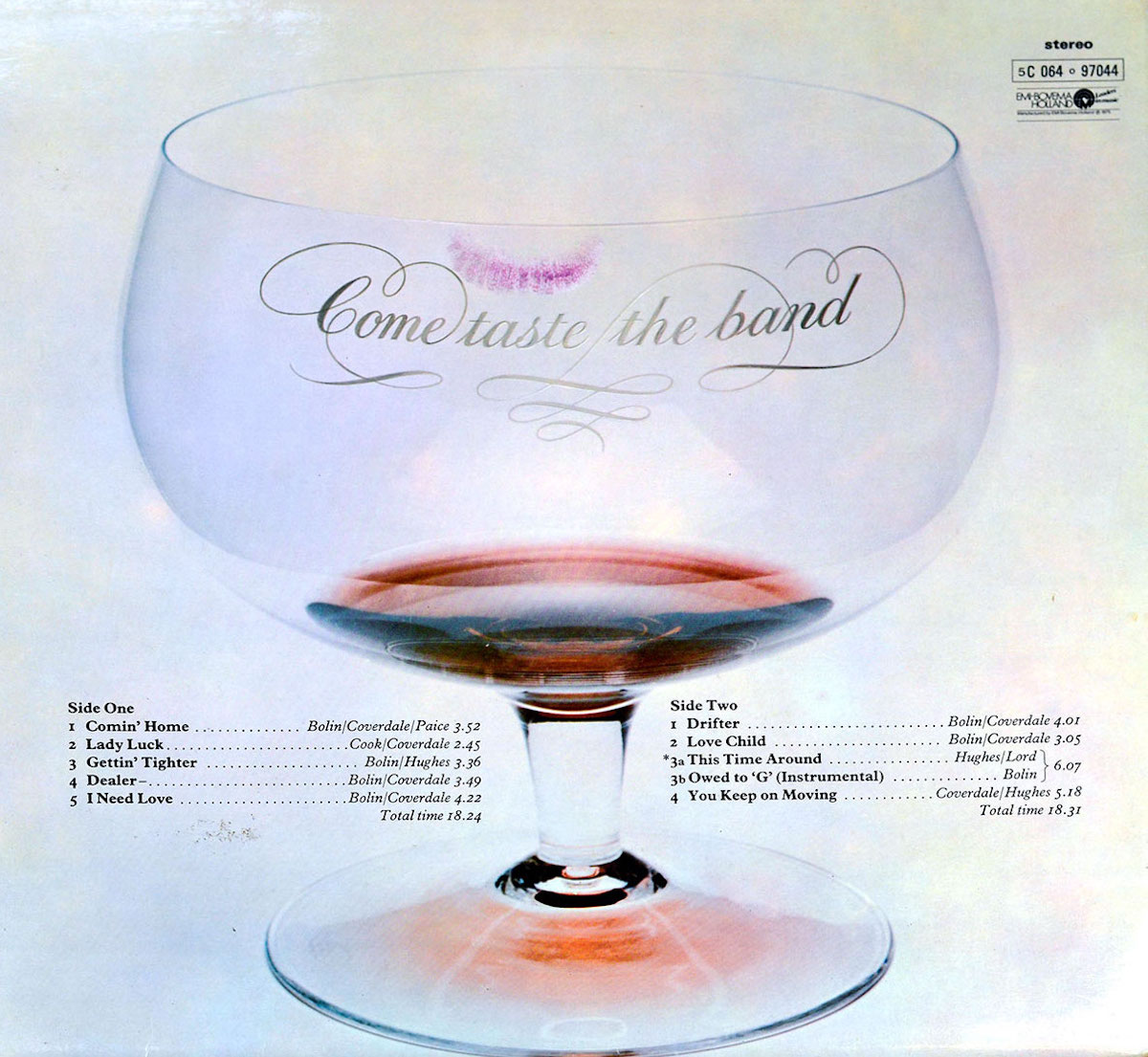
He blames much of his drinking and cocaine use on dealing with the distress from a disastrous last-minute December stop in Indonesia on the way to Japan. Lured by promoters, the band were to play a 7,000-seat venue in Jakarta. They got a $10,000 deposit, but never saw a cent more. The band arrived to find the venue was actually an outdoor stadium which held more than 120,000 people — and they were booked for two shows with security being handled by the island nation’s military. Band management tried to convince promoters the group was owed around $750,000. Instead, long story short, armed soldiers ended up going into the crowd with Doberman Pinschers, the wheels on the band’s plane were flattened and their bodyguard Patsy Collins died when he somehow ended up falling six floors down an elevator shaft. Tour manager Rob Cooksey believes the whole affair was a setup, with members of the band informally accused of playing a role in Collins’ death. They paid thousands of dollars to get their passports back and got out of there as fast as they could. Anyway, back to the album…
Side 1 wraps with I Need Love, which is kinda forgettable. The chorus is dumb, but the verses are cool. Flip the thing over and we encounter the riff-O-rama that is The Drifter. Cock rock is what perhaps best describes this one. A nice little feature for some creative and crafty Paice drumming.
Next is Love Child, not the Supremes song but rather the fourth of four Bolin/Coverdale songs in a row. It’s impossible for me to listen to this song without hearing the riff from What You’re Doing by Rush or Heartbreaker by Led Zeppelin. Both are superior to this.
Then comes This Time Around/Owed To ‘G’ —‚ another Hughes track, with help from Lord. It’s Lord’s only writing credit on the record. I think George Michael could have turned this into a hit. The second half of the song is a very theatrical instrumental by Bolin. The kind of song which gets Bob Ezrin out of his chair. That brings us to the big closer You Keep On Moving, which is an attempt at a moody dramatic Purple piece. But Lazy it ain’t. The album’s only Coverdale/Hughes co-write — I do not like these dual vocals, guys. It’s an anthem attempt which falls short. It’s boring and wildly oversung.
Some albums are slow burners — you have to hear them a few times before they get their hooks in you. Some records never manage to do that at all, while others are infectious from the outset. This one makes no impression on the first pass, sounds incredible the second time around, and boring and dumb by the third time. Non-essential, for completists only.
3/5
• • •
Area Resident is an Ottawa-based journalist, recording artist, music collector and re-seller. Hear (and buy) his music on Bandcamp, email him HERE, follow him on Instagram and check him out on Discogs.
















